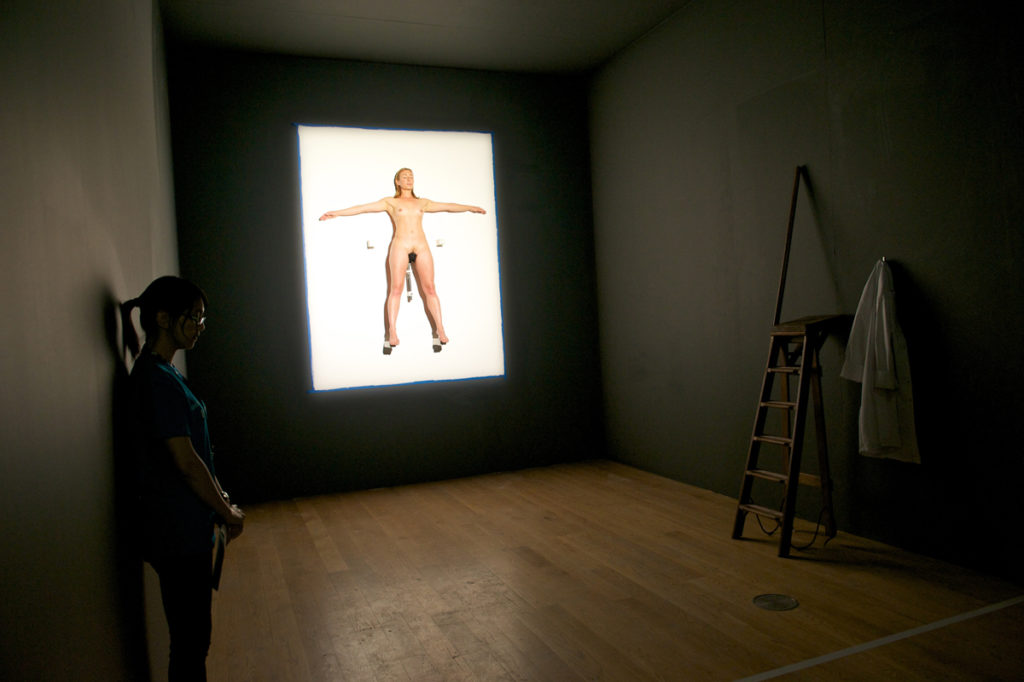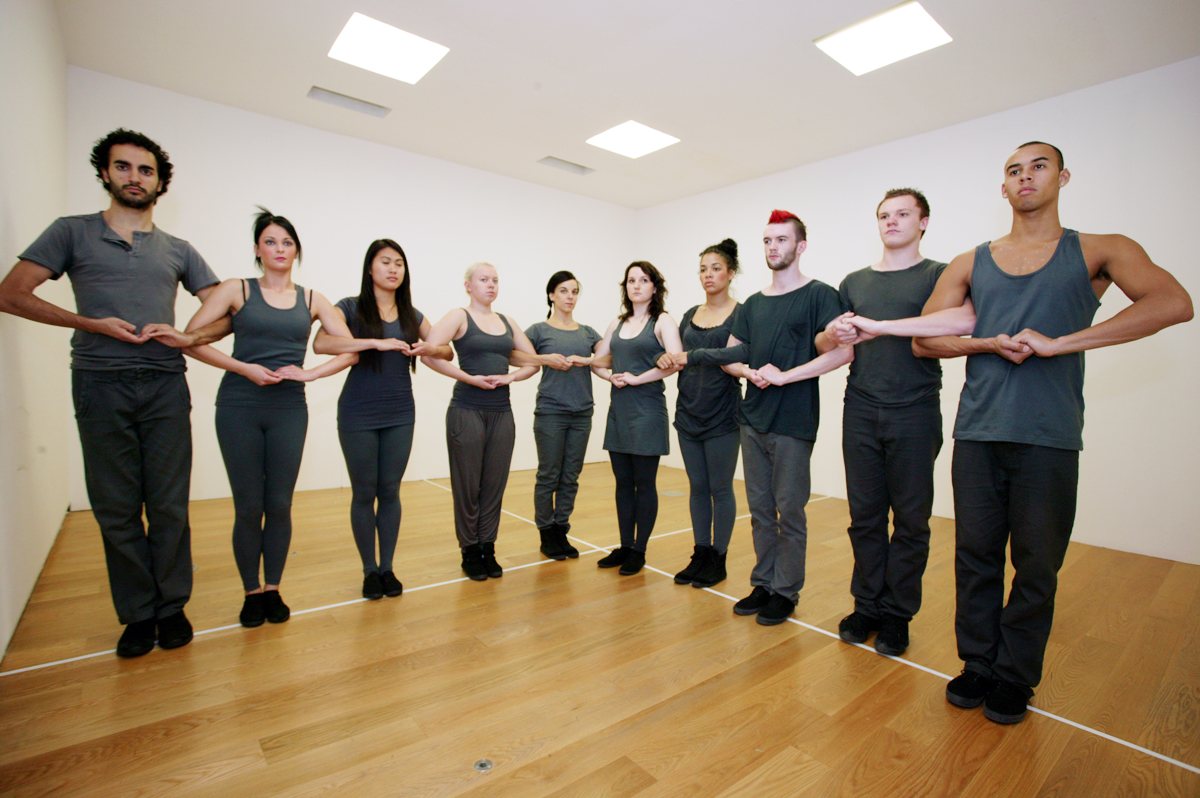Art & Exhibitions
Hans Ulrich Obrist and Klaus Biesenbach Bring 14 Rooms to Art Basel
Basel presents the latest edition of the performance-as-sculpture show this summer.

Basel presents the latest edition of the performance-as-sculpture show this summer.

Alexander Forbes

In an exhibition commission of unprecedented scale for an art fair, Art Basel, the Fondation Beyeler, and Theater Basel have teamed up with international curatorial powerhouses Hans Ulrich Obrist and Klaus Biesenbach to bring the latest edition of their performance-as-sculpture exhibition to Basel this summer. Titled 14 Rooms this time around, it’s set to run for the full length of Art Basel as well as the weekend before and Monday following. This latest edition features works by 14 artists, among them Marina Abramović, Allora and Calzadilla, Damien Hirst, Roman Ondák, Santiago Sierra, Xu Zhen, Ed Atkins, Dominique Gonzalez-Foerster, and Otobong Nkanga. The latter three will be premiering never-before-seen pieces, specifically commissioned for the exhibition. Each work takes place within its own closed-off room, this time designed by Herzog and de Meuron.
Speaking exclusively to artnet News ahead of the announcement, Art Basel director Marc Spiegler said that the artist list, “will really be representative of the art world and its span today, in the sense that it crosses many, many generations and many geographies.” Allora and Calzadilla’s Revolving Door (2011), which sees a human chain of performers herd viewers around their room, and Ondák’s Swap (2011), which allows viewers to exchange anything on their person for the object the performer has on the table at which he sits, were commissioned for the exhibition’s original iteration, 11 Rooms, at the 2011 Manchester International Festival. But (relatively) historical works are involved as well: Abramović places a nude performer midway up her room’s brightly spot lit wall for a rework of Luminosity (1997) and Hirst recruits sets of identical twins to sit under identical dot paintings for Hans, Georg (1992).
14 Rooms‘ new commissions will add a contemporary edge to the show, according to Obrist. He tells artnet News that these additions aim to open the exhibition, “Up to a newer generation of artists who address the digital and the question of the avatar in relation to our show.”
It’s the fourth edition of the exhibition, which after its stint in the UK, continued at Germany’s Museum Folkwang and in Sydney for the 12 and 13 Rooms editions, respectively. About the initial conception, Obrist says, “We felt it’s important to develop an exhibition, which provides situations for experience and participation, and the possibility of direct involvement however the viewer defines this.” Biesenbach adds: “A lot of the inspiration for this show has been the idea that live art can be sculpture and can actually have the same kind of duration that a physical object has: being there from morning to night, throughout the opening hours of a gallery. But when the last visitors leave, and the gallery closes its doors for the evening, the sculptures will all walk out as well.”
Herzog and de Meuron’s architectural scheme for the exhibition takes advantage of the added space in Hall 3 over that of the previous venues, whose house-like rooms were designed by Hans Seidler architects. “The size of the rooms always remains the same but Herzog and de Meuron have come up with an invention which will mirror the rooms,” says Obrist, saying the effect will be the appearance of even more rooms than are physically present. These added spaces will allow for a greater level of participation between the performances and their viewers as well as, “much more space for the flow of people [through the exhibition] which is important. It’s about individuals seeing each other; it’s much more related to people than to things,” he continues.

Allora and Calzadilla, 11 Rooms (2011)
Photo credit Manchester International Festival, courtesy Manchester City Galleries
From Art Basel’s side, the move to commission such an ambitious large-scale exhibition seems aimed at further emphasizing its three fairs as spaces of discourse and knowledge-production as much as commerce. Spiegler says the only comparable event would be their Il Tempo Postino (2009), curated by Obrist and Philippe Parreno for the fair’s 40th anniversary. “We want to have these kinds of exhibitions that will motivate people to come, to stay longer than they might have otherwise,” he explains. “We want to have the kind of exhibitions that make people regret missing the show and come the next time around.”
The show is also a key effort at creating a place of fairtigue-reducing repose for visitors. “I think it will be a very interesting counterpoint of the art fair where you meet a lot of people in a very fast-paced way,” Spiegler comments. “I think it will create an interesting pause, a caesura.” Biesenbach agrees, explaining that the format of the show was specifically designed to get viewers out of their habitually quick glances at artworks. “It’s surprising, but normally people don’t actually spend much time in front of artworks in museums. The Louvre once analyzed it. Even in front of the Mona Lisa, visitors only spend a few seconds on average,” he says. Deceleration is achieved not only through the time-based nature of performance but also particularly by the architectural intervention, separating the works: “Movement is slowed down by the fact that you have to open the door – it’s like entering somebody’s house. It’s intimate when you open the door: you see behind the door and you have this encounter.”
Art Basel is, however, far from the end point of the curators’ ambitions for the Rooms series. “We like the possibility of creating an exhibition that could be restaged later. Like music, it could become part of a catalogue of things that can be performed again in different contexts,” says Biesenbach. The only limitation, it seems is the size of the building they can take over and place it within. “We intend the project to continue for many years: 2015, 15 rooms, 16 rooms in 2016,” Obrist adds. “Maybe in 2100 there can be 100 rooms.”
14 Rooms runs from June 14-23, daily from 10am-7pm, and on June 15, 10am-5am.